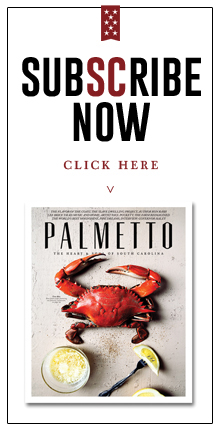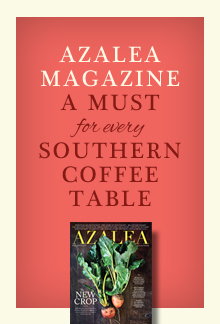
The Storyteller – Natalie Daise
USING HER MYRIAD OF TALENTS TO EDUCATE AND INSPIRE, NATALIE DAISE IS A BRILLIANT FORCE OF WISDOM AND CREATIVITY.
Natalie Daise was just a young woman when she stepped off a Greyhound bus from New York and breathed in the salty air of Beaufort County, South Carolina. At 22, her schooling was behind her for the time being, and her new life in the South was an exciting blank slate for her to finally write her own story. As she navigated the unfamiliar streets, she could not shake the feeling that this place, however foreign it may be to a girl from central New York, was home for her. Comforted by the sensation, Natalie visited her sick grandmother, spent time with extended family members, and soon, attended her local church congregation. It was there that she heard a young man, skinny and bespectacled, sing in such a way that her soul responded with deep emotion. The two were introduced, and eventually, their relationship would go on to become one of the most impactful joining of hearts the state had ever seen.
When Natalie first met Ron Daise, their relationship was strictly platonic. Over time, they began to collaborate creatively, singing together in a quartet, a trio, and finally, a duo. They connected over their love for creating, their mutual pursuit of knowledge and understanding, and the compassionate hearts they offered to everyone they encountered. Before long, they had fallen in love. As they grew together, Ron, a fervent storyteller, shared stories of his ancestors, who he could trace through his DNA all the way back to Ghana and Sierra Leone. Many of his ancestors had been brought to islands off of the South Carolina coast as slaves, selected for their ability to grow rice, which was an important cash crop at the time. They later became part of the Gullah Geechee culture, a part of society whose stories Ron Daise was—and is—determined to keep telling. Around the time he and Natalie met, Ron was often spotted driving around town in his Toyota Corolla, chauffeuring elderly Gullah Geechee women to their various appointments while interviewing them for a book he was writing, which was later published under the title, Reminiscences of Sea Island Heritage: Legacy of Freedmen on St. Helena Island. His passion for his culture was apparent in everything he did, and soon, Natalie became invested in telling the stories right along with him. She and Ron found that they both knew many of the same traditional Gullah songs; Natalie’s grandmother had sang them to her in her youth, and Ron had grown up on St. Helena Island, where nearly every inhabitant was part of the Gullah Geechee culture. Together, they sang the songs and told the tales of their ancestors for anyone who would listen, and friends and family members encouraged the couple to take their stories to larger audiences. Ron had the idea to turn his book of Gullah Geechee stories into a script for a performance on Gullah Culture, and worked on it diligently. Word spread in the right circles about the work Natalie and Ron were doing, and soon, the pair quit their jobs to pursue their craft full-time. They became itinerant performers, traveling around the country to perform at museums, colleges, libraries, churches, and education conferences. Sharing their culture far and wide, they became key members in the Gullah Geechee community, known for their passion and expertise on all things Gullah.
In 1989, Natalie met novelist Gloria Naylor, who had written a book based on the Gullah Geechee community. The two hit it off, and eventually, Natalie found herself on the very tip of St. Helena Island, in a hastily furnished home, eating cold chicken out of a box with Gloria Naylor, Naylor’s college friend, Maria Perez, and actor Laurence Fishburne, discussing turning a novel by Naylor, “Mama Day,” into a movie. It was on that night that Maria Perez suggested that Natalie and Ron turn their performances into a children’s television show for the Nickelodeon channel. Having heard similar pitches from well-meaning friends before, Natalie didn’t think much of it, but a few months later, 9 months pregnant with her son, Simeon, there was a knock at the door. Producers from New York had tracked her down, and they spent the day filming Natalie and Ron going about their lives. A few weeks later, they received a call from New York. Executives from Nickelodeon had seen their tape, and wanted to make a show based on the Daise family and Gullah Culture.
“They invited us to come up to New York to discuss the show, and I ended up in this boardroom, with my five week old baby, surrounded by people wearing suits that cost more than my car,” laughs Natalie. “We had no agent, no television experience, nothing. But we were given the green light for our show, and we were on the air in less than a year.”
The show was called Gullah Gullah Island, and it became a cult classic of the 90’s. Running between 1994-1998, the show featured Ron, Natalie, their two children, Simeon and Sara, and other characters singing, dancing, and sharing life lessons. At the center of the show was a focus on the Gullah Culture, which would establish Gullah Gullah Island as the first children’s show to star an African-American family set in an indigenously black community. As a result, the program, which was the highest-rated preschool show during its original run, exposed children across the nation to a culture which they may have never encountered, and paved the way for more diverse offerings in the future. Today, it holds a special place of nostalgia in the hearts of all who watched it in their youth, with both Ron and Natalie having served as teacher, parent, friend, and entertainer to millions of children growing up in the nineties. Regularly, they are approached with stories and words of gratitude, their program resonating even two decades later.
After finishing their seventieth episode, the last for Gullah Gullah Island, Natalie and Ron continued to create, inspire, and grow together. Ron, who Natalie says is the very definition of a true partner, secured a job at Brookgreen Gardens as the Vice President of Creative Education, and Natalie further immersed herself in the world of using storytelling as an educational tool. She acquired her Masters degree in Creative Studies, helped develop materials for early childhood education, and held creative workshops for students and teachers alike.
“Stories just drop the barriers,” says Natalie. “They are a gentle way of opening doors so that we can all communicate. When I tell stories, it is not just me standing there talking while everyone else is listening. We are building a community in the room, truly seeing and hearing each other. If, for example, I can get a room of people who believe they are very different from one another to laugh together, then they all connect with the story and each other at the same time. When we laugh together, we share a reaction, and we share an experience. From there, we can begin to understand each other and grow together.”
Shortly after finishing Gullah Gullah Island, Natalie’s passion for storytelling found an outlet in an unexpected medium: the visual arts. She began painting, and with each canvas, she shared elements of her history, her culture, and her life. Even seemingly benign elements like a bowl of collards, which appeared in one of her earlier paintings, evolved in her work over time to represent her early childhood, her family of origin, and her connection to African-American culture and gathering. In later paintings, the collards take on a life of their own, morphing into wings, halos, and finally, in “Collard Queen,” an exquisite gown. For “The Evolution of Cornbread,” Natalie recalls her great grandmother, who had few photos taken during her lifetime, and captured her memory of the venerable woman by posing for a photo herself and bringing it to life with reverence and gratitude. Most of her paintings depict people, and it is often in their faces, their hands, their eyes, and their gazes that stories can be found by those willing to listen. Sometimes, Natalie ties in Adinkra cultural symbols, which originate in West Africa, to quietly evoke the spirit of a painting. In “A Prayer For Peace,” a young boy prays in front of a backdrop of the Gye Nyame symbol, which references the supremacy of God. In “Saint Monifa” a woman looks toward the future while flanked by the Fafante symbol, referencing tenderness and the fragility of life. In all of her work, Natalie Daise celebrates the beauty and strength of her heritage, telling the stories of people past, present, and future with an open heart and generous spirit. Though the artist did not begin sharing her work with the public until 2011, today, her art can be found hanging in museums, art shows, libraries, and homes across the Lowcountry and beyond.
Never one to stop evolving, Natalie is constantly in search of more creative ways to educate and inspire. Most recently, while discussing a way to bring Gullah Geechee culture into the daily lives of modern people, she and Ron decided to make a set of wisdom cards, and collaborated on the design and use of them. They took their product to Kickstarter, and were fully funded before their deadline. The set, now available on Natalie’s website, is divided into seven decks which reflect seven principles important in Gullah Geechee culture: Respect for Elders, Tenacity, Creativity, Heritage, Spirituality, Family and Community, and Self-Sufficiency. These are divided into another seven subsets: Understanding, Ancient Wisdom, Spirit Music, Reflection, Testimony, Visualization, and Empowerment. Users of the set can pull a card from within a deck either at random or by careful selection, and an accompanying guidebook aids in seeking meaning and creating an intention based on the card pulled. Natalie’s art is displayed on each card, and lessons are taught through song, story, and encouragement for reflection.
Soon, another family collaboration will take flight in the work of Natalie and her daughter, Sara Makeba. The presentation, called “Pruning our Mother’s Garden,” is a discussion on what is learned from mothers and daughters, and what can be done to apply that knowledge to better serve each other and future generations. Sara, a cultural history interpreter, brings her studies of Afrofuturism to the project, encouraging participants to dream for future generations just as their ancestors did for them. Natalie and Sara hope to bring the discussion to as many places as possible, opening up dialogue about culture, acceptance, and growth.
In all that she does, Natalie Daise seeks to foster dialogue, elicit understanding, and inspire positive evolution.
“You’ve got to tell your own story,” says Natalie. “If you don’t, someone else will tell the story of who you are, and it won’t be correct. And you have to listen to the stories of the past, because how can you understand anything if you don’t know its evolution? History is constantly impacting who we are. We must listen to stories and ask ourselves, ‘Who am I in this story? How can I move forward from here? How can I best use this newfound understanding?’ In doing so, we can facilitate positive change and move forward together.”
For more information about Natalie Daise and her work, visit www.nataliedaiseart.com.
By Jana Riley
Recommended
-
Events, Art, and Natural Beauty: Downtown Summerville Truly Has It AllJune 6th, 2019
-
Kaminski House Museum Marks its 250th YearMay 23rd, 2019
-
For the Love of the AnimalsApril 16th, 2018
-
The Storyteller – Natalie DaiseApril 16th, 2018
-
Living History – Camden South CarolinaApril 16th, 2018













